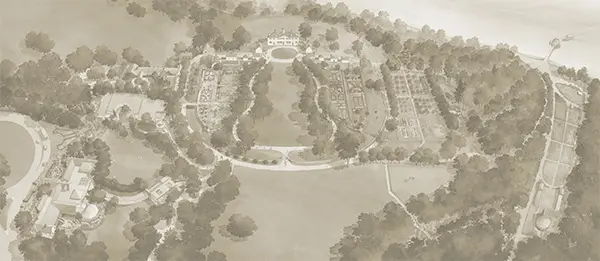The fig tree dates back to ancient times and is an important source of food for many cultures. Flowers are borne inside the fig structure (syconium), and the fig is ripe and at its sweetest when it softens and turns dark late in the season. Coarse-textured leaves, which are large and deeply lobed, are immediately eye-catching in the garden.
Latin Name
Ficus carica
Family
Moraceae
Type of Plant
Seasons
Specifications
Uses
Sunlight Exposure
Attracted Wildlife
Toxicity
Colors
Native Range
Asia
History
On November 18, 1784, Washington wrote to John Marsden Pintard, agent for the United States in the Island of Madeira, asking for "a few slips of the vines of your best eating Grape; and a young fig tree or two." While these fig trees didn't survive the voyage, he did eventually plant some figs in the Lower Garden, as noted in his Gardener's report on February 18, 1798, when the gardeners were " Diging & pruning Fig trees in the under Garden..." Washington often mentions the vine and fig as a metaphor for retirement from public life, as in a 1797 letter to the Marquis du Lafayette, writing "that I have once more retreated to the shades of my own Vine and Fig tree, where I shall remain with best vows for the prosperity of that country for whose happiness I have ... "
Other Details
Planted at Mount Vernon


Hardiness Zones










Average annual extreme minimum temperature 1976-2005









Bartlett Tree Expert Company has been working with Mount Vernon Estate since 2011 providing expert arboricultural care and GPS mapping for the estate’s historic trees, as well as support from their research facility. Mount Vernon is proud to partner with Bartlett Tree Experts and appreciates their sponsorship of George Washington’s Mount Vernon Plant Finder App.
Bring Washington's Garden Home
Purchase our historic seeds, collected from plants grown at Mount Vernon and plant them in your own garden.
Shop Now

